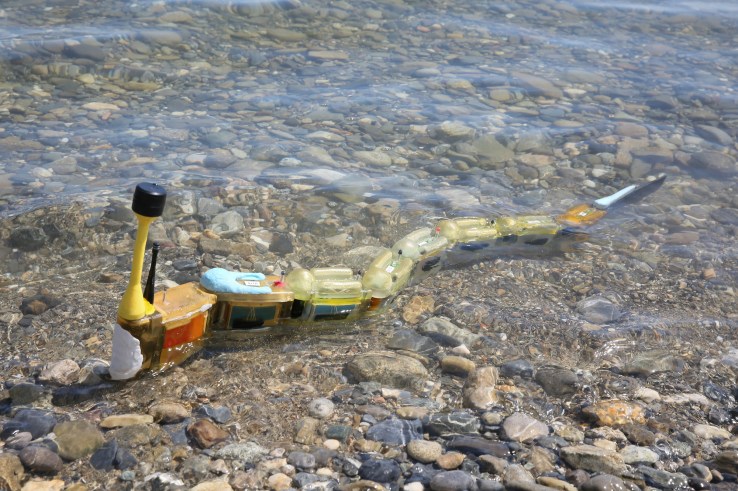
The next time you’re swimming in Lake Geneva, don’t be surprised when you feel something eel-like and yet artificial touch your leg. That would be Envirobot, the latest biomimetic creation from Swiss researchers that autonomously swims around bodies of water and tests them for toxins and other factors.
It’s from l’École polytechnique fédérale de Lausanne, which also produced the salamander-like Pleurobot[1] and some convincing imitation reptiles[2] for a BBC nature documentary. But while Pleurobot was about studying animal locomotion and the others were for surreptitiously monitoring wildlife, Envirobot is meant to be a tool for ecologists and other scientists.
The 4-foot creature, or device, whatever you want to call it, is made up of many small segments, each with a specialized purpose but sharing the ability to flex in concert with each other, creating a serpentine motion that propels it through the water.
The head, naturally, is the control center, housing the gear the robot needs to get around — camera, computer and so on. The segments are where the magic happens, though. Inside each cavity are sensors of various kinds: electrical, chemical and biological.
-

ENVIROBOT_K
-

ENVIROBOT_D
-

ENVIROBOT_H
-

ENVIROBOT_J
Electric sensors can track the salinity of the water, and chemical ones obviously can test for acidity or certain elements. The biological sensors are different, though: they’re filled with living organisms or tissues — fish cells, microfauna, etc. — which react in predictable ways to, say, the presence of insecticides or other toxins. (You can see a sensor cavity in the...
Read more from our friends at TechCrunch